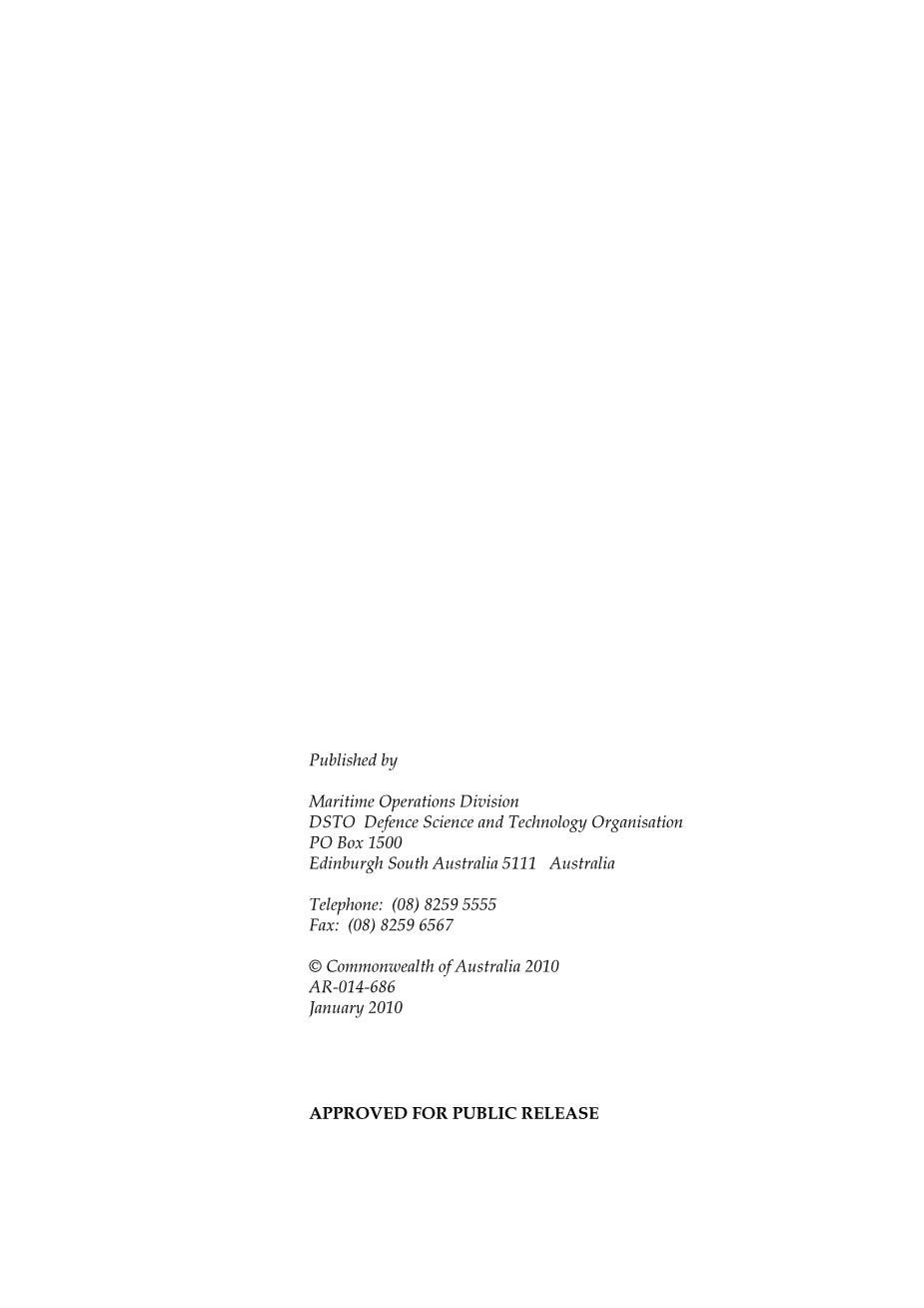

英语原文共 30 页,剩余内容已隐藏,支付完成后下载完整资料
Simulation Model of Networked Tracking for
Anti-Submarine Warfare
ABSTRACT
This report describes a simulation model of sonar tracking, developed to explore the effect of
networking sonars on tracking performance. The tracker is an extended Kalman filter with data
association by nearest-neighbour in Mahalanobis distance. Data fusion algorithms also use
Mahalanobis distance. Simulation outputs have been verified against analytical results where
possible.
This report describes a simulation model of active sonar tracking, developed to explore theeffect of networking. The model builds on earlier analytical work (DSTO-TR-2086), which
found that detection probabilities as low as 30% could be useful for track initiation if there
was a network of sonars such that these detections could be shared with other sonars with
similar probabilities of detection.
Having shown analytically that networking offered benefits in terms of starting tracks, the
simulation was developed in order to see if this networking advantage carries through to
other stages of the tracking process. This report documents the simulation model and the
testing of this model against results from the previous analytical work. We find good
agreement, thereby providing a level of validation of the simulation model. A study which
uses the simulation model to compare centralised and distributed tracking is described in
a companion report (DSTO-TR-2373).
1. Introduction
This report describes a simulation developed to investigate the effect of networking on
tracking in the context of active sonar. The model is an extension of earlier analytical studies
[1] which indicated benefits could be obtained through networking, and was developed to
allow us to examine the effects of some of the assumptions made in the analytical work. This
report gives details of the model and describes its testing against the analytical results. A
study of the capability impact of networking sonar systems using the model is described in a
companion report [2].
The previous work focussed on track initiation and compared the performance when tracks
are formed on detections from a group of sonars (centralised tracking) with the case where
each individual sonar forms tracks using only its own detections (distributed tracking). The
simple analytical approach taken did not consider measurement errors or the effect of false
detections, nor the resulting difficulties in associating detections with each other to form
tracks. Effectively, we assumed that, if the target is detected three times in five pings, then we
always start a track. In reality this may not always occur, as measurement errors may mean
that the detections are not close enough together or a false detection may interfere with the
track formation process by confusing the picture. In short, the analytical study doesnrsquo;t give
sufficient consideration to the issue of data association.
Also the significant issue of the increased false track rate arising from centralised tracking was
ignored. Our previous work included an analytical study of false-detection rate, but it did not
address the issue of the false detections leading to false tracks.
The simulation model allows us to investigate the effects of measurement errors and false
detections. The false (i.e. non-target) detections in the model are assumed to be lsquo;noisersquo;
detections which are not associated with any nearby real object. Recurrent clutter type
detections which result from objects, such as bottom features or fish schools, are a separate
issue that is not considered here. The simulation model includes data association, track
maintenance and track termination, not just the track initiation step. All sonar operation is
assumed to be active and multiple monostatic.
The simulation code can be divided into three distinct parts — scene generation, tracking and
analysis of the tracks. In the first of these three parts, a scenario is set up and detections are
generated. At the end of this stage, there exists a separate file for each sensor in the scenario,
containing all of the detections made by that sonar and information about the sonar
properties. These detection files are passed to the tracking code, which outputs data structures
containing tracks. The third stage of the simulation involves extracting information of interest
about the tracks, and providing this in a useful form for further analysis, by writing the data
to an Excel spreadsheet.
Section 2 of this report describes the scene generation part of the simulation model, including
how detections (both target and non-target) are generated. The next section, Section 3, gives a
detailed description of the tracking algorithm, which is based on the Kalman filter. The focus
of our work was on analysing the effect of networking, not on developing or improving
tracking algorithms, and so we have used a standard algorithm. The level of detail in this
section is provided for those readers who are not familiar with tracking techniques. Section 4
reports some verification of the simulation model by comparing the results obtained with the
earlier analytical work [1].
2. Scene Generation
A scenario is set up by editing parameter values in a Matlab script file. The user needs to
specify:
the number of sensors and their location, given as (x,y) coordinate pairs (depth is
n
全文共26368字,剩余内容已隐藏,支付完成后下载完整资料
资料编号:[143919],资料为PDF文档或Word文档,PDF文档可免费转换为Word


